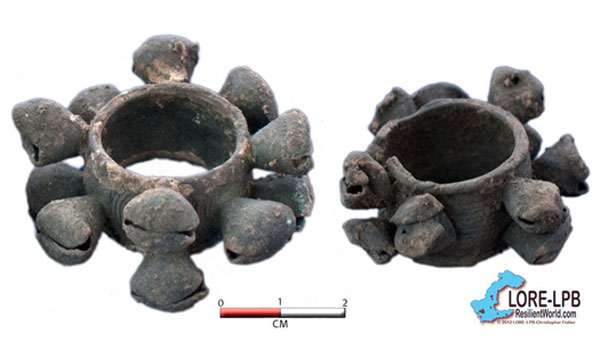Unique artifacts uncovered in Mexico shed light on ancient civilisation
A team of archaeologists from Colorado State University have uncovered a rare copper and bronze rattle, as well as numerous human remains at a site in Angamuco, a pre-Hispanic city in the Mexican state of Michoacán. The discovery sheds light on the ancient civilisation of the Purépechas, who were fierce foes of the Aztecs.
The Purépechas, known as the Tarascans to the Spanish Conquistadors, flourished in the state of Michoacan from about 1100 A.D. to 1530 A.D. While their origins are unknown, the Purépecha language, which is unrelated to any other in Mesoamerica, has been linked to Quechua, the native language of Peru. They were fierce warriors, who were never conquered and in their glory years, successfully sealed off huge areas from Aztec domination.

A scene depicting the Tarascan/Purepechan culture of Michoacan. Image source.
The latest excavation in Michoacán, led by associate professor of anthropology, Chris Fisher, unearthed the remains of 37 individuals, numerous ceramic vessels and other grave goods, as well as the unique and still functioning rattle, which can be heard here. The artifacts and remains date primarily to the middle to late Postclassic period (1000-1520 AD), a period of dramatic social, environmental, and political change.

Human remains uncovered at the site. Photo source.
“The discovery of this mortuary complex provides a unique lens through which we can examine changes in health, status and well-being during a period of rapid social change that is associated with the formation of the Purépecha Empire,” said Fisher. He added that the finding, which follows eight years of excavation, “really completes our view of this ancient civilization and the occupation of the site.”
Previous excavation and survey revealed a remarkable ancient city, covering more than 12 square kilometres. Light Detection and Ranging (LiDAR) technology exposed more than 20,000 architectural features and a highly organized city that is far more complex and included more people than previous research in the region had suggested.
The Tarascan/ Purépechan capital city of Tzintzuntzan was dominated by a huge platform supporting a row of five temple pyramids called yácatas. From this religious and administrative center, the Tarascans waged war against their neighbours, the Aztecs.
Like the Aztec, the Purépecha Empire was destroyed following European occupation in the early 1500s.
Featured image: Bronze rattle discovered in Michoacán. Photo source.




















Comments
interesting how some items were created so long ago (rattle in this case) and yet we still continue to use them, its amazing